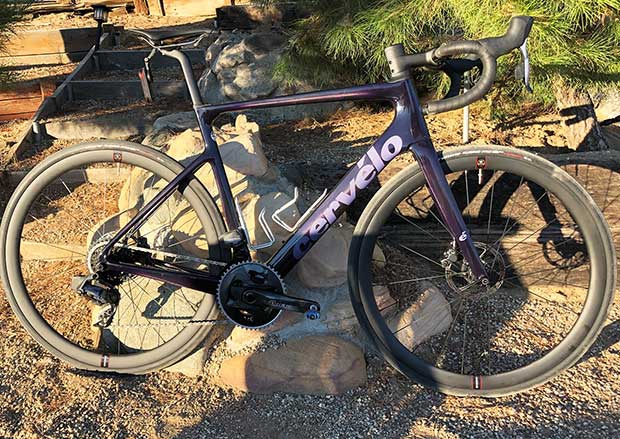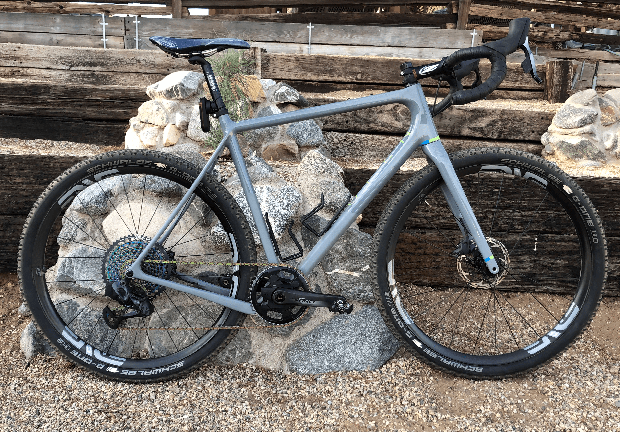The OPEN WI.DE as a Do-Everything Bike
This is the third bike I’ve presented over the last couple of weeks that spans a massive use case range. These are the bikes of the future. This concept works for me because my gravel and road positions have informed each other to the point where it's the same position.
I first became aware of the utility of bikes like this back in 2014, when I put road wheels on my new Litespeed gravel bike and found that it was every bit the equal of my dedicated road bike. Today, enterprising bike makers make their bikes with this in mind.
Today it’s an OPEN WI.DE. This is a purpose-built gravel bike. But as we’ve seen here with the Cervelo Caledonia and the OBED Boundary, if you design a bike that assumes a wheel radius of, say, 345mm, you have a ready-made platform for both a road bike and a full-blown West Coast gravel bike. What you need in this case are 2 sets of wheels, in this case CADEX 42mm road wheels in 700c, (just below) and my trusty ENVE G27 in 650b (in the images immediately following).
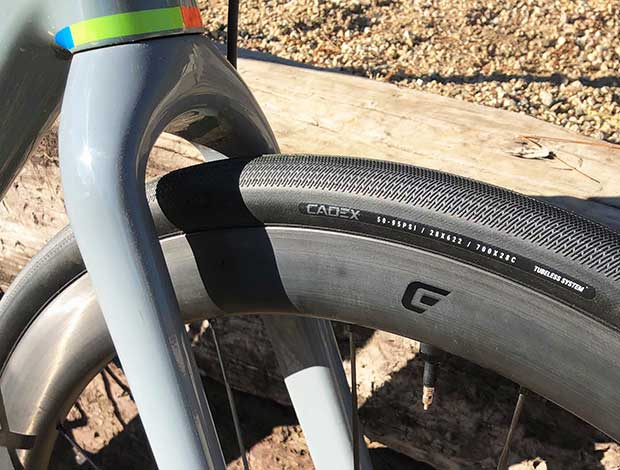
Before I go further I have to extol the virtue of the G27 wheel. It’s my everyday gravel wheel on this bike, and I can't find a way to get this wheel out of true or round and boy have I tried (in the course of my riding). It’s got a Schwalbe G-One Bike in 53mm, same as a 2.1” tire, and while this tire has a less aggressive tread than the tires on my dual suspension mountain bike, it’s that width. This tire, on this wheel, on this bike, is a go-everywhere bike. And on this bike it’s ridden in its 650b size.
But this is the nature of what I call West Coast gravel: rocky river washes, steep up and down, decomposed granite sand, and pavement. We’re either riding on paved roads or we’re on MTB-worthy terrain. We don’t have nice country gravel roads in California. It’s most comfortable choosing the wheel and the gearing that solves the worst case parts of my ride, hence the use of this wheel/tire.
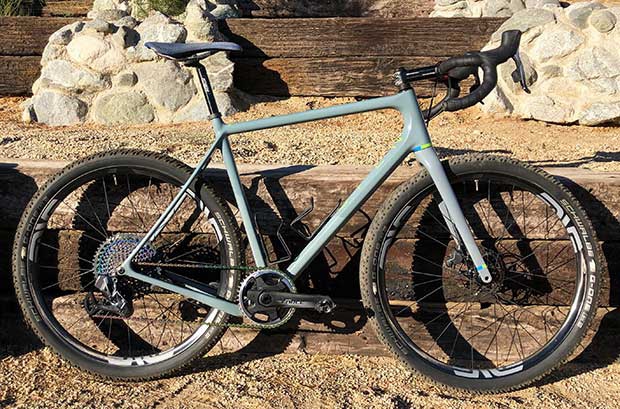
Stance Width
Let’s talk about this for a moment; maybe you all understand this but maybe you don’t. Road and gravel bikes share a common frame platform that is not shared by MTB frames, and I’m not talking about suspension or any other MTB-specific feature. Road and gravel share a common crank and BB motif. You can put a road crank on a gravel bike and vice versa. In fact, you might say that SRAM has erased the lines between road and gravel. When you put these cranks on a frame, the distance from the pedal shoulder – where the pedal meets the crank – to the centerline of the bike is roughly 75mm. it could be as small a number as 72.5mm. When you double this, you get what’s commonly called Q Factor – one pedal shoulder to the other – and for Campy it’s tradionally been 145mm or so, and for Shimano between 145mm and 150mm.
Gravel preserves this dimension. The typical distance from the pedal shoulder out to the middle of the pedal is 53mm. So, you add 106mm to the Q Factor and you get a Stance Width of between 250mm to 255mm. When riding road, gravel or tri, this is how you pedal.
MTB? No. The Q Factor is more like 172mm or 175mm. Your pedals are pushed away from the frame an extra centimeter and-a-quarter on each side. Why are MTB bikes built wider? To accommodate for that fat rear tire. As that tire pushes out the chain stays (to make room for that tire) the crankset had to be spaced out from the frame, so that the chain rings don’t contact the chain stay. Basically, that drive side chain stay is caught in a pincer: fat tire on the inside, chain rings on the outside.
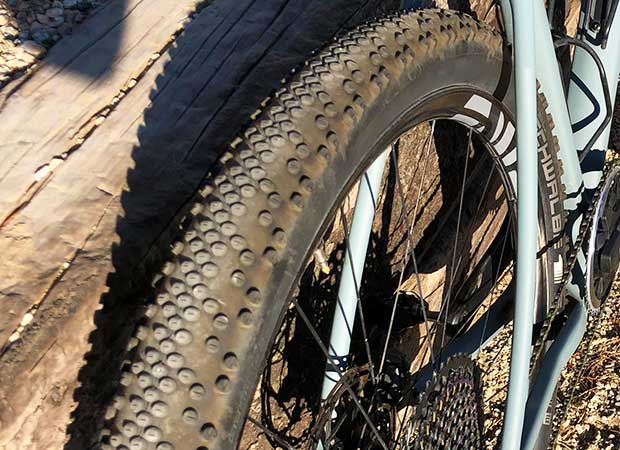
Wheel Radius
But this is one reason why you like your gravel bike – it rides and feels like your road bike. As discussed when I showed you the OBED with 2 sets of wheels, the magic to getting a bike that feels good regardless of fat tire or skinny is that the wheel radius – from the hub axle to the ground, needs to be the same on both wheels. The tech that makes this possible is disc brakes. This allows you to choose wheels of different sizes. You use 650b with the 2.1” tires, and 700c wheels with 28mm or 30mm tires. Same wheel radius on each.
In this case, the skinny-tired wheelset is a new set of CADEX wheels I just got. These are 42mm deep and I can actually ride these both as road or as gravel wheels. In that sense they’re somewhat analogous to the Zipp 303 wheels I’ve been writing about, both the 303 S and the 303 Firecrest. All these wheels are straightwall (hookless bead) construction, are for tubeless (and not tubeless-ready, these are tubeless period), and are reasonably fattish in inner bead width (23mm to 25mm), making them candidates for anything between 25mm to 40mm tires.
But, again, I don’t like this kind of dual-use bike I’m writing about used with 700c wheels and 40mm tires. That’s a much taller wheel, and if the bike is geometrically designed around that 345mm wheel radius then once you put a 700c wheel in there with 40mm+tires, that's maybe a 355mm radius and this changes the dynamics of this bike as regards steering and shoe overlap.
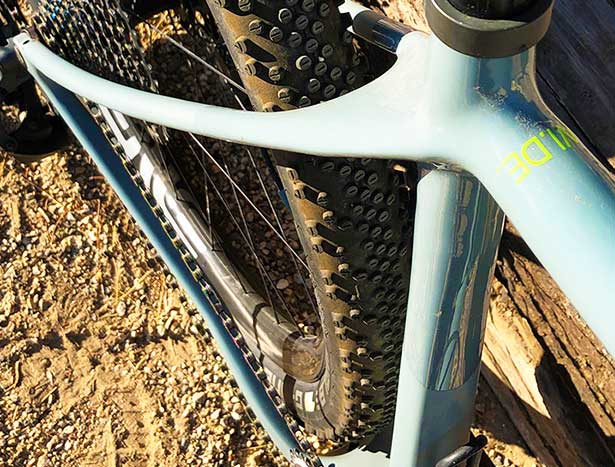
Gearing
This OPEN WI.DE I'm writing about today introduces a new challenge to the exercise that I did not need to face when I wrote about the Cervelo Caledonia or the OBED Boundary. These bikes had 2x drivetrains. The OBED has a GRX mechanical groupset on it; this is dedicated gravel; 48×31 chainrings and 11-34 cassette. The smallest gear on that OBED, the 31×34, had about a 24.5” gear. That’s a nice small gear, good for the steep offroad hills we have out here in California where I live. The Caledonia has a SRAM AXS 48×35 and an 10-36 gearbox, and the smallest gear is just over 26”, still pretty small, and fine for that bike as that is more of a dedicated road bike.
Can I make this OPEN WI.DE a dual-use bike? It’s got a SRAM AXS 1x on it, SRAM Eagle behind the crank and SRAM Force eTap from the crank forward. It’s got a 42-tooth chain ring on the bike and a 10-50 in the back. The small gear on that bike is a tiny 22.5” gear, but let me tell you sometimes even it is not tiny enough for the riding I do on that bike. The large gear is 113.5”. Is that a large enough gear for you, if you configure this bike for road, with those CADEX wheels? The OBED has a 48×11 as the largest gear, and that is a 118” gear. The OPEN’s tallest gear is about halfway between the OBED’s 11-tooth and 12-tooth.
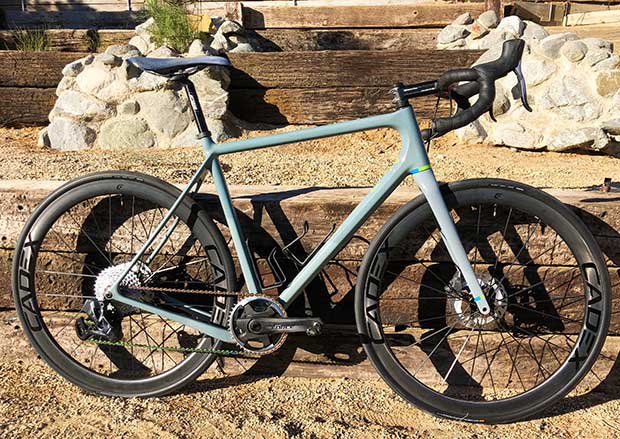
Well, heck, you might just put a bigger chain ring on the OPEN, if you have bigger legs than I do, and you need a bigger gear on the high end and you don’t need that tiny gear on the low end. Well… no. You can’t. Remember that stance width discussion? That tighter road Q Factor pushed the crank closer to the frame, and that wheel clearance in the OPEN WI.DE – what that bike’s known for – pushes the chain stay out. This means a 42-tooth is the largest ring you can put on that frame.
The Upshot
The OPEN WI.DE works very well as a one-bike-fits-all. When I put the camper on the truck and I take off for several days of riding, it’s this bike with 2 wheelsets. Before the shrewd among you mention this, yes, I’ve shot a pic of a bike that is not actually usable. The CADEX wheelset has a Shimano cassette on there. I have an XDR driver body for this wheelset, so that I can put on an Eagle cassette, but I’ve misplaced my thru axle end caps and am awaiting a set.
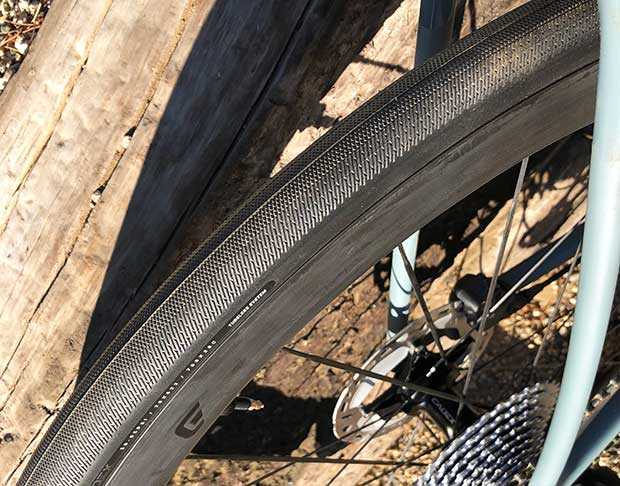
Shimano and SRAM both lack certain gearing options in their lineups, and SRAM’s missing option is, perhaps, that 10-42 or thereabouts 12-speed cassette, for the road wheelset. That would give me 1:1 gearing (42×42) which is probably low enough for the road riding I’ll do on my getaway trips. But that cassette doesn't exist yet, to my knowledge, and the 10-36 cassette doesn't offer me a lower enough gear, so, even on my road wheel set-up, 10-50 it is.
I don’t have a new 3T Exploro Racemax in my workshop, but I think this would be a potentially great option for everything between fat tire gravel and road race. It appears to be almost a geometric duplicate of the OBED Boundary I’ve got, which I just wrote about. Of course the 3T has both the desired tire clearance and it is built with aerodynamics in mind.
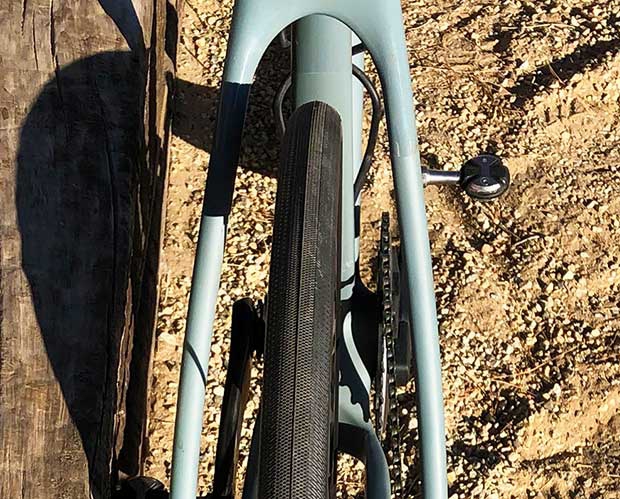
A few notes in closing. You might wonder whether the irreconcilable issue is the handlebar. If you choose a gravel bar, and then you put your road wheels on your bike, how is that bar compatible with dedicated road bike riding? I have come to view the gravel bar as the next road bar. You guys who gave me guff over disc brakes on tri bikes, and road tubeless, here I am being irksome again. Let's see what road handlebars are going to look like. I predict a narrowing of the hoods position; and a flare in the drops; and a final tube bend so that the bars at their terminus are back to parallel with the bike. I’m pretty confident these new gravel bars made by 3T, Profile Design, Zipp that are shaped as I describe, shallow drop (110mm to 120mm), short reach, are the template for what road bars are going to look like. So, no conflict for me!
I’ve got a lot of parts I’m putting on these bikes I haven’t spoken of before, like these CADEX wheels and tires. Yes, this is a Giant-owned brand. No, I haven’t written about them yet. Still noodling them. What I will say is this: My new first tests for tubeless are: Do the tires go on hands-only? Do they bead up with normal inflation pressures? And do they hold air well overnight before I put any sealant in? CADEX so far passes all my first-look tests. More on these later.



